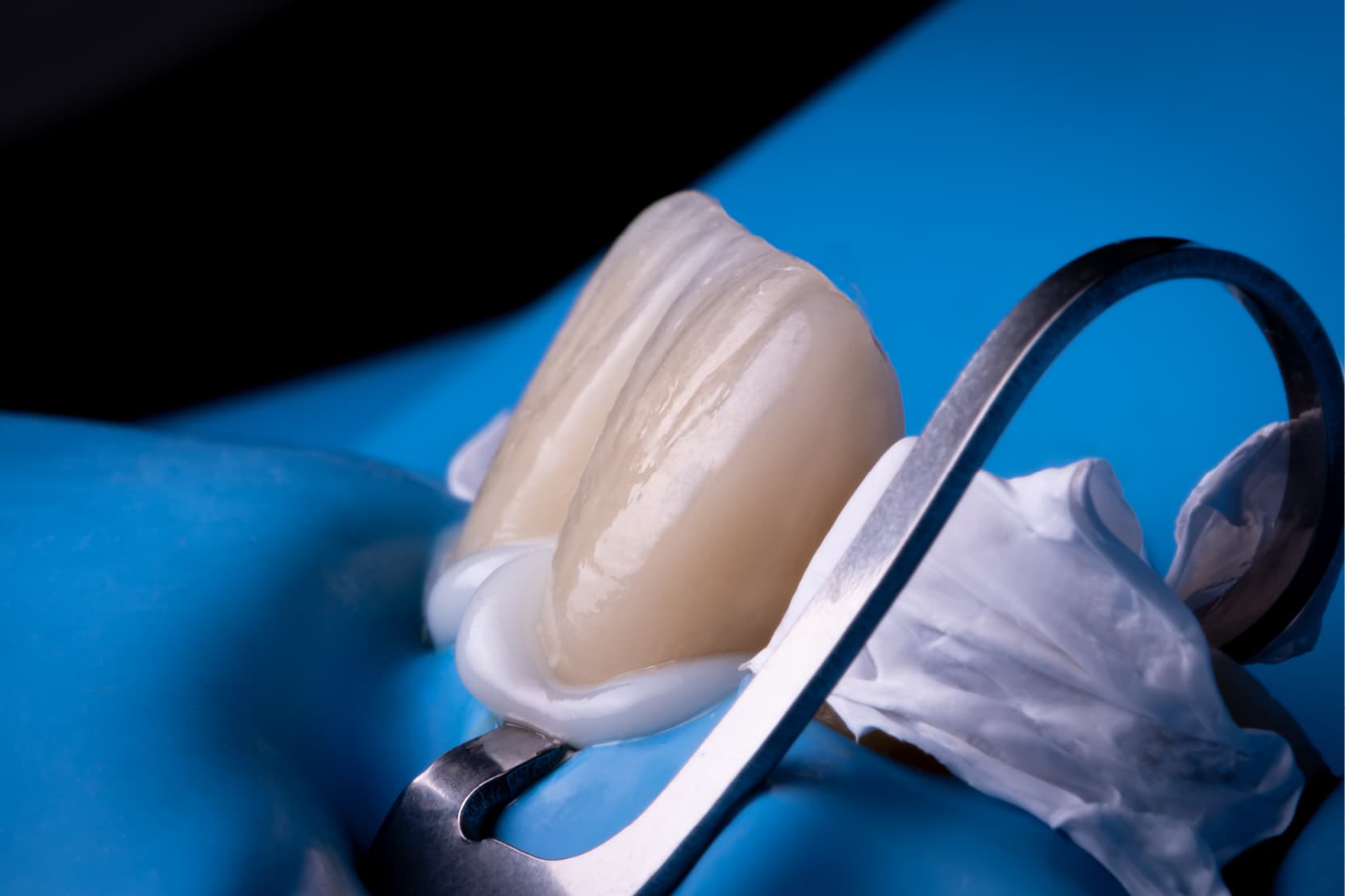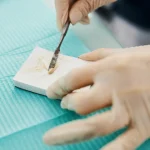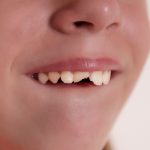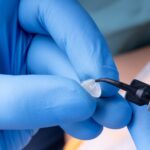
There are several types of dental cement on the market. The first distinction to be made is certainly between endodontic cements and cements for dentures (1). Endodontic cements are used in endodontics for filling root canals while cements for dentures are used to cement prostheses to teeth (1,2).
Focusing on the latter, it is worth mentioning that the first cements for prostheses were not adhesive cements, neither for the tooth nor for the prosthesis material, but they adequately filled the space at the tooth-restoration interface, creating a strong micromechanical retention between the two surfaces, thus preventing dislocation of the prosthesis (1,2).
The current cements for dentures (permanent) involve the use of adhesive techniques, based on the creation of a solid layer that serves both as micromechanical retention and as adhesion to the substrates in order to improve denture retention (3).
Classification of dental cements for dentures by material
Dental cements for dentures can be classified in different ways based on: the type of material, chemical reaction for setting or according to the formulation and reaction compounds (2).
In this article, based on the type of material, we will classify them into:
- Zinc oxide-eugenol cements
- Zinc phosphate cements
- Polycarboxylate cements
- Glass ionomer cements
- Resin-modified glass ionomer cements
- Glass ionomer and calcium aluminate hybrid cements
- Compomers
- Resin composite cements
Zinc oxide-eugenol cements
Zinc oxide-eugenol cements are supplied in liquid-powder or paste-paste form and are mostly used in temporary cementing of provisional restorations (2). In fact, their properties of low compressive strength, low pH and significant solubility in watery environments do not make them suitable for permanent cementing (4).
To strengthen these cements, acrylic resins and alumina fillers have been added, but they are still less resistant than zinc phosphate cements and glass ionomers (5).
Zinc oxide-eugenol cements should be used with caution under composite restorations since eugenol may inhibit resin polymerisation (1). However, the presence of eugenol makes these cements bacteriostatic and provides a fairly sedative effect on dental pulp, which, over the years, has made them the material of choice for filling the pulp chamber following pulpotomies or pulpectomies in primary dentition (4).
Zinc phosphate cements
Zinc phosphate cements are generally supplied in powder-liquid form; this powder contains zinc oxide (and, to some extent, magnesium oxide) and the liquid contains phosphoric acid and water. These cements are manually mixed using a small spatula and their acid-base reaction is strongly exothermic and influenced by the powder-liquid ratio, temperature and the presence of humidity (6).
These were the first cements to be used in dentistry for the permanent cementation of crowns and bridges, whether cast or metal-ceramic, since they offer adequate retention and mechanical strength, although they form no chemical bond either with the abutment or the prosthetic materials (7).
Polycarboxylate cements
Zinc polycarboxylate cements, unlike zinc oxide cements, are able to form a chemical bond with enamel and dentin, by binding calcium ions to the acid groups of the polyacrylic acid chains (2). These cements are also supplied in a powder-liquid form to be mixed manually with non-metallic spatulas, as they form strong bonds with stainless steel (1).
Rapid mixing is strongly advised for these cements, since polycarboxylates become thinner as the cutting speed increases, with a consequent reduction in cement viscosity, which helps to ensure easy insertion into the inner surface of the prosthesis (2). It is also essential to allow for the setting time (3-6 minutes) and use the cement before it loses its “glossiness”, as the shiny surface indicates the presence of free carboxylic groups on the surface, in order to obtain a good bond with the abutment (2). They are used in the same way as zinc phosphate cements.
Glass ionomer cements
Glass ionomer cements are made polyacrylic acid, silica, alumina and fluorite. They are marketed in several forms, but the most common are the powder-liquid forms; the powder is made up of the glassy portion of the cement in which silica, alumina and fluorite are incorporated, while the liquid is composed of polycarboxylic acid (1).
Glass ionomer cements chemically bind to the mineralised tissues of teeth by chelating acrylic acids to the organic and inorganic components of the tooth, and they continue to polymerise even after the setting time (1,2). In fact, the mechanical properties of these cements are initially low but they improve over time in order to create a cement with high tensile and compressive strength also due to its low viscosity that allows it to penetrate into all the smallest cracks of the surfaces it comes into contact with (micromechanical retention) (8).
The ability to release fluoride ions over time in the surrounding environment is a distinctive feature of these cements, which are therefore also useful in the prevention of tooth decay (1,2,8).
Resin-modified glass ionomer cements
They are also known as “glass ionomer hybrid” cements, and can be chemically polymerised, with light or in both ways, and the acid-base reaction of the glass ionomer occurs simultaneously with polymerisation (2).
These are also available in powder-liquid formulations, where the powder contains glassy fluoro-aluminosilicates and one or more primers such as camphorquinone, while the liquid is a water solution of polyacrylic acid, HEMA and methacrylate.
Their reaction rate is much slower compared to conventional glass ionomers because the formula contains less water, but the bond to the dental tissue is still due to the interaction of calcium with polyacrylate (2). Compared to conventional glass ionomers, these cements have been shown to have higher bond strength (9); however, this seems to be due more to a better micromechanical fit of the cement with the micro-cracks on the tooth surface rather than to the development of a resinous hybrid layer that infiltrates the dentine tubules (10).
Nevertheless, the presence of methacrylate results in greater polymerisation shrinkage of these cements and the small amount of water and carboxylate results in less adhesion to the dental structure of the cements, which are therefore more likely to suffer from micro-infiltrations compared to glass ionomers (11).
Compomers
Compomers are composites modified with polyacids, built by incorporating glass ionomer cement particles into the resinous matrix (2). They are generally supplied in a single light-curing or self-curing paste or as a dual product, and powder-liquid formulations are also available.
They are moisture-sensitive cements and absorb water from saliva, which triggers the slow acid-base reaction of the glass ionomer particles with the carboxylate, which leads to the release of fluoride (12). However, this process reduces the compressive and bending strength of the material (13). Adhesion to the dental tissue is only achieved by means of an adhesive that must be applied before they are positioned and, when using them on enamel, it is always advisable to etch to reduce the risk of micro-infiltration (14).
Resin composite cements
Resin composite cements have the same chemical structure as dental restoration composites but a considerably lower viscosity (2). To date, they are the materials mainly used for the permanent cementing of crowns and bridges on both natural abutments and implants and in association with ceramic and metallic materials (1).
However, there is a broad range of mechanical properties among these materials due to differences in the type of resins, and in the size and quantity of fillers (1,15,16).
They can in turn be classified into 3 large groups (15):
- Adhesive cements (multi-step)
- Self-adhesive cements (one-step)
- Universal cements.
References:
1. Breschi L, et al. Materiali e tecnologie odontostomatologiche. (2011): 95-117.
2. Anusavice KJ, Shen C, Rawls HR. Phillips’ science of dental materials. 12th edition. Elsevier Health Sciences; 2012. 492–494 p.
3. Sakaguchi R, Ferracane J, Powers J, editors. Materials for Adhesion and Luting. In: Craig’s Restorative Dental Materials (Fourteenth Edition). Philadelphia: Elsevier; 2019. p. 273–94.
4. Donly KJ, Sasa IS. Dental Materials. In: Pediatric Dentistry. Elsevier; 2019. p. 293–303.
5. Phillips RW, Swartz ML, Norman RD, Schnell RJ, Niblack BF. Zinc oxide and eugenol cements for permanent cementation. J Prosthet Dent. 1968 Feb 1;19(2):144–50.
6. Gonçalves SEP, Bresciani E. Reconstructions using alloys and ceramics. In: Material-Tissue Interfacial Phenomena. Elsevier; 2017. p. 23–66.
7. Donovan TE, Cho GC. Diagnostic provisional restorations in restorative dentistry: the blueprint for success. J Can Dent Assoc. 1999 May;65(5):272–5.
8. Zheng LW, Wang JY, Qing Yu R. Biomaterials in Dentistry. In: Encyclopedia of Biomedical Engineering [Internet]. Elsevier; 2019 [cited 2024 Jan 14]. p. 278–88. Available from: https://linkinghub.elsevier.com/retrieve/pii/B9780128012383110335
9. Baig MS, Fleming GJP. Conventional glass-ionomer materials: A review of the developments in glass powder, polyacid liquid and the strategies of reinforcement. J Dent. 2015 Aug 1;43(8):897–912.
10. Wilson AD. Resin-modified glass-ionomer cements. Int J Prosthodont. 1990;3(5):425–9.
11. Yelamanchili A, Darvell BW. Network competition in a resin-modified glass-ionomer cement. Dent Mater. 2008 Aug 1;24(8):1065–9.
12. Munack J, Haubert H, Dogan S, Geurtsen W. Effects of various storage media on surface hardness and structure of four polyacid-modified composite resins (‘compomers’). Clin Oral Investig. 2001 Dec;5(4):254–9.
13. Piwowarczyk A, Ottl P, Lauer HC, Büchler A. Laboratory strength of glass ionomer cement, compomers, and resin composites. J Prosthodont. 2002 Jun;11(2):86–91.
14. Restoration of teeth (simple restorations) and preventative dentistry. In: Restorative Dentistry. Elsevier; 2007. p. 73–87.
15. Maravić T, Mazzitelli C, Mancuso E, Del Bianco F, Josić U, Cadenaro M, et al. Resin composite cements: Current status and a novel classification proposal. J Esthet Restor Dent. 2023 Oct;35(7):1085–97.
16. Grande F, Carossa M, Balma A, Scotti N, Mussano F, Catapano S. Influence of Thickness and Thermocycling on Tensile Strength of Two Resin-Based Cements Used for Overdenture Bar-Type Attachments: An In Vitro Study. Int J Prosthodont. 2023 Sep 20.
Would you like more information about Zhermack Dental products and solutions?
Contact us




 Zhermack SpA has been one of the most important producers and international distributors of alginates, gypsums and silicone compounds for the dental sector for over 40 years. It has also developed solutions for the industrial and wellbeing sectors.
Zhermack SpA - Via Bovazecchino, 100 - 45021 Badia Polesine (RO), Italy.
Zhermack SpA has been one of the most important producers and international distributors of alginates, gypsums and silicone compounds for the dental sector for over 40 years. It has also developed solutions for the industrial and wellbeing sectors.
Zhermack SpA - Via Bovazecchino, 100 - 45021 Badia Polesine (RO), Italy.


